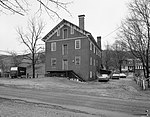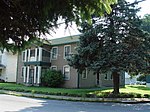Morgantown Municipal Airport
Airports in West VirginiaBuildings and structures in Monongalia County, West VirginiaEssential Air ServiceTransportation in Monongalia County, West Virginia

Morgantown Municipal Airport (IATA: MGW, ICAO: KMGW, FAA LID: MGW) is three miles east of Morgantown, in Monongalia County, West Virginia. It is also known as Walter L. Bill Hart Field. It sees one passenger airline, Southern Airways Express, subsidized by the Essential Air Service program. The FAA's National Plan of Integrated Airport Systems for 2021–2025 categorized it as a primary commercial service airport (more than 10,000 enplanements per year).The airport's runway cannot handle larger airplanes, but it has filed a request with the Federal Aviation Administration to lengthen the runway.
Excerpt from the Wikipedia article Morgantown Municipal Airport (License: CC BY-SA 3.0, Authors, Images).Morgantown Municipal Airport
Easton Mill Road,
Geographical coordinates (GPS) Address External links Nearby Places Show on map
Geographical coordinates (GPS)
| Latitude | Longitude |
|---|---|
| N 39.642777777778 ° | E -79.916388888889 ° |
Address
Morgantown Municipal Airport
Easton Mill Road
26503
West Virginia, United States
Open on Google Maps



